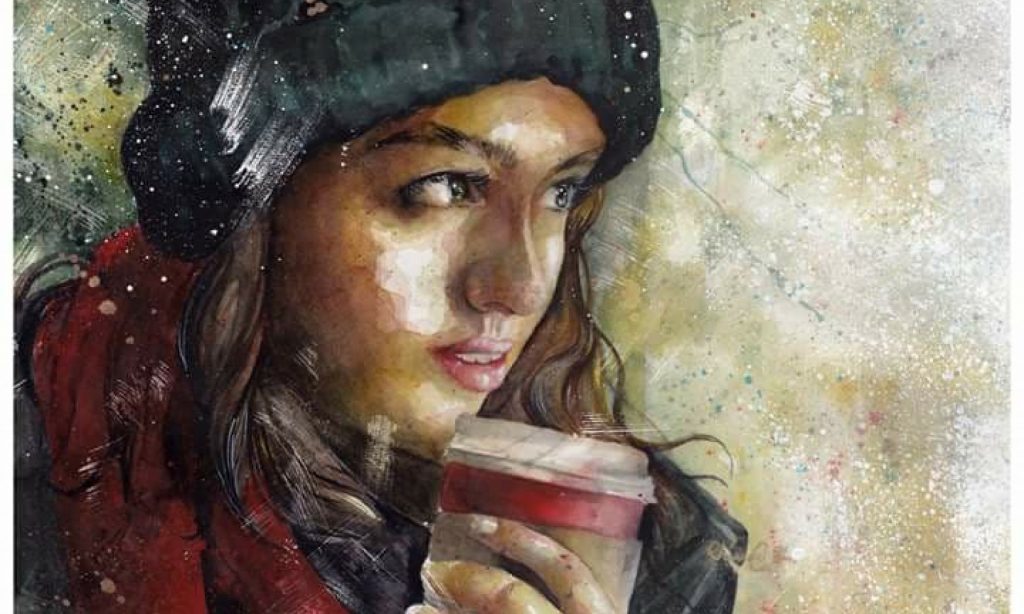There are many artists who have explored the idea of memory, but also the ideas of the past, how memory fade, and how things can be nostalgic or how we reminisce.

There are some artists who have a focus on more a collective memory, where they address a more general history. One example is Lubaina Himid, who often explores and challenges the topic white male view on history and instead focuses on the underrepresented traditional history of people of colour. This isn’t necessarily the path I wish to take with this project and I am more looking at personal experiences of memory. However it could be interesting to build in a more collective history of the reasons why one might experience trauma and PTSD. Which would be interesting as I like to explore women’s rights, and feminist topics (I hate those terms though, because a feminist is just wishing for equal rights, and therefore anyone who doesn’t want that should just be considered sexist, and the rest is just human) and with what is ongoing in the news at the moment it feels very relevant.

I am more interested with this project on how to make memory physical. Emma Kays work has become fascinating for me, she explores how memory functions, but also the idea of selective memory, and generally her work explores memory and subjectivity. In one of her works Worldview (1999) she tries to write down, by only using her personal memory as a reference, the history of the world. But also she has created works which she works in the same way but has recalled the Bible. By using this methodology she has also commented on the future, by using her memories of science and fiction, explaining what the future may hold, to create her own personal view by using animated typography and projection. This work was called The Future from Memory (2001)

Tracey Emin is an artist who I have researched in the past for my minor project, however when researching memory in connection to art, her name appears again. May Dodge, My Nan Is a piece where she as an artist has collected objects in relation to her nan. She writes a handwritten tribute and the collection and presentation of everything together acts as a memorial to her Nan.

Agnes Martin, who considered herself as an abstract expressionist, even though she was commonly referred to as a minimalist, created some works that look at memory, but more specifically towards spirituality and emotions. She created the work Happy Holiday, which appears at first glance to be a series of stripes. But her quiet, and also serene look to her paintings come from her own personal struggle with her emotions and spirituality. She uses her titles cleverly to evoke different memories and feelings from the past. She was very interested in interpreting abstract emotions especially ones in relation to when we listen to music, we can been seen in the inclusive and expansive nature of her pieces and how they are non-specific but one can place their own experiences within her work.

Other artists have explored how memories fade, and often the artist’s recreation and treatment of their memories have lead to the work having ‘a dream-like quality’ (Tate, 2021). Rachel Whiteread, is a sculpture who primarily works with casting, especially of architectural objects. She has created work by making casts of parts of buildings which have since been demolished, and this leads to her work having a melancholy feeling and quality this is because ‘They appear as ghosts of their original structures’ (Tate, 2021). She is a very accomplished artist and in 1993 was the first woman to win the annual Turner Prize. But she has also been awarded a CBE in 2006 and then DBE in 2019 for services to art.

Similarly, Angus Fairhurst, has created many works where he has manually blanked out man made objects in important geographic places, by doing so he is trying to physically remove and erase the memory and impact of man on the world. He is trying to make us consider the idea of memory before man, and the effect we have had as humankind on our world around us.
Bibliography
Tate (no date) Rachel Whiteread Available at: https://www.tate.org.uk/art/artists/rachel-whiteread-2319 (Accessed: 29 March 2021)
Tate (no date) Agnes Martin Available at: https://www.tate.org.uk/art/artists/agnes-martin-1583 (Accessed: 29 March 2021)
Tate (no date) Happy Holiday Available at: https://www.tate.org.uk/art/artworks/martin-happy-holiday-ar00179 (Accessed: 29 March 2021)
Tate (2021) Memory Coursework Guide Available at: https://www.tate.org.uk/art/student-resource/exam-help/memory (Accessed: 27 March 2021)
Tate (no date) Emma Kay Available at: https://www.tate.org.uk/art/artists/emma-kay-2701 (Accessed: 28 March 2021)
Chisenhale Gallery (no date) Emma Kay The Future from Memory Available at: https://chisenhale.org.uk/exhibition/emma-kay/ (Accessed: 28 March 2021)
